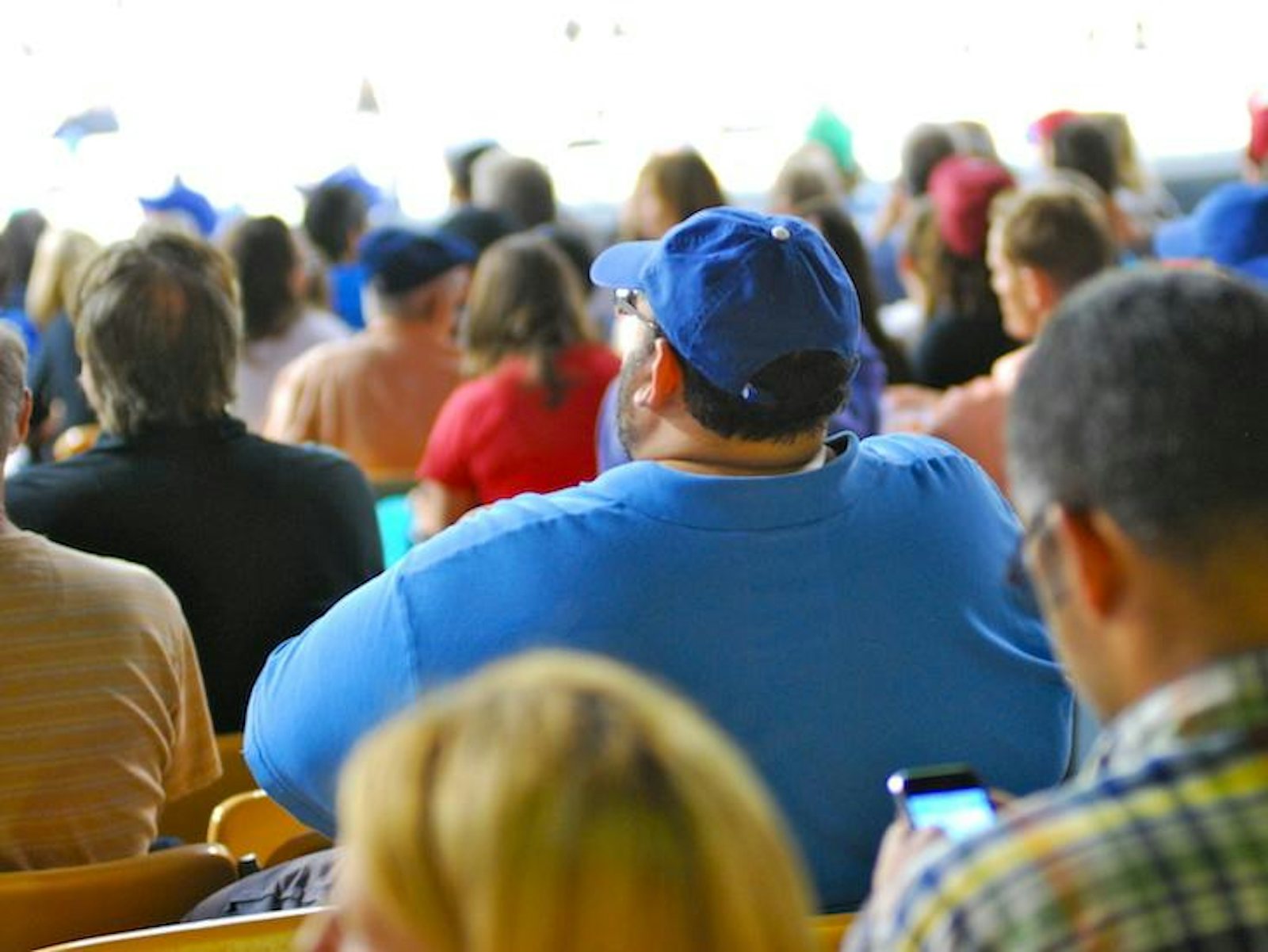Over 72 million Americans are obese—a condition associated with a plethora of negative health outcomes including diabetes, cancer, and heart problems. But Americans’ eating habits aren’t obesity’s only cause, and we’ve suspected as much for a long time now. In 1932, the California Medical Association noted that “the inborn disposition to obesity may be very complex in its nature…many persons grow fat though they eat less than do other persons of the same sex, age, and height who do not fatten; and many grow thin on diets that suffice to maintain normal weight in others who seem equivalent.”
Obesity, like many medical conditions, is partly in the genes. But why would the human genome be speckled with genes that contribute to obesity? Two leading theories seeking to explain the genetic origins of obesity set “thrifty” against “drifty.”
James Neel introduced the “thrifty gene” hypothesis in 1962, and since then, it’s become quite popular. The website How Stuff Works, for example, cites the idea in its article, “Are there evolutionary roots to human obesity?” The “thrifty gene” hypothesis, according to the National Institutes of Health, “suggests certain genes increase the efficiency of metabolism to extract energy from food and store the energy for later use. This survival trait was advantageous for populations whose food supplies were scarce or unpredictable and could help keep people alive during famine.”
Just under a decade ago, John Speakman, a biologist at the University of Aberdeen, introduced a rival hypothesis. Speakman proposes that the alleles—or versions of a single gene—underpinning obesity may have ended up in our genome due to genetic drift, whereby gene variants become more or less common due to chance alone, as opposed to positive selection of alleles conferring a fat-storing trait. Instead, Speakman proposes that early humans could just as well have been under selective pressure to not gain weight—leaner humans being less likely to become a meal for a big cat or other predator, perhaps because they’re less tasty, faster runners, or both. Any sort of strong selection for leanness then dissipated around 2 million years ago as we learned to use fire and make weapons, reducing the risk of predation. Later, Speakman says, alleles favoring obesity occasionally stuck around at random in different populations after arising through mutation.
The “thrifty gene” idea may be more popular, but a new study suggests it’s starting to show its age. In a paper published last month in Cell Metabolism, Speakman and his colleague Guanlin Wang, from the Institute of Genetics and Developmental Biology at the Chinese Academy of Sciences, in Beijing, add some weight to the “drifty gene” hypothesis. They surveyed populations from all over the world and demonstrated that a large collection of obesity-linked alleles did not appear to have been under positive selection in the past—in other words, it doesn’t appear these alleles have helped us survive past times of food scarcity. A collection of statistical tests, each detecting a genetic signature of past positive selection, were used to suss out whether or not the body mass index (BMI)-linked mutations were under positive selection as humans evolved over the last 250,000 years; BMI is a measure of where a person falls along a spectrum from underweight to obese; a person of 5”6’ and 280 pounds has a BMI of 45 (a healthy BMI falls between 18 and a half and 25).
Several types of mutation generate alleles. While some mutations dramatically alter the structure of a gene by deleting most of it or inserting a piece of unrelated DNA, others, like single nucleotide polymorphisms (SNPs), simply involve swapping out a nucleotide (a particular A, T, C, or G) for another at a single position in the DNA code. After analyzing previous studies that matched up variations in the human genome with body mass, Wang and Speakman found 115 SNPs associated with BMI. Wang and Speakman then took advantage of public domain genomic data, much of it from the 1000 Genomes Project, for people of European, American, East-Asian, and African ancestry, to look for evidence that the BMI-linked SNPs helped to keep us alive (and have children) in times of famine or food scarcity.
Some of their statistical tests were based on how common the SNPs were in different populations—take Tibetans and their lowlander Chinese neighbours, for example. Recent positive selection—for withstanding the effects of hypoxia at high altitudes, say—would cause SNPs conferring this trait to become relatively more common in populations colonizing mountainous regions of the world. Other tests were based on how an SNP influenced the degree of variation in the DNA near it, with recent positive selection—occurring within the last 250,000 years—tending to favor fewer changes to these regions.
Using this multi-test approach, the authors couldn’t detect positive selection more often among the BMI-linked SNPs compared to a collection of randomly selected SNPs. Only nine of the 115 SNPs under investigation appeared to have been under significant positive selection, and five of those nine were for an allele favoring lower fatness as opposed to obesity.
Wang and Speakman caution that the links of some of the SNPs they investigated to obesity might be found lacking. For one, as individuals with particularly high or low muscle mass will attest, the BMI isn’t a perfect measure of flab. A bodybuilder can have a high BMI, indicating they are overweight, when in fact their relatively high mass is due to their substantial musculature. BMI also doesn’t distinguish between the fat present just beneath a person’s skin or contained deep within their abdomen, the latter being more strongly associated with adverse health outcomes such as cancer and heart disease.
In the studies Wang and Speakman analyzed, few of the SNPs had been investigated using more accurate means of assessing obesity, such as measuring a person’s abdominal fat volumes by using x-rays or nuclear magnetic resonance to capture a detailed image of their insides, so some of the SNPs might not be strongly associated with this condition. What’s more, the functions of many of the SNPs are not fully understood, including how they might contribute to excessive weight gain. It might be that they have other effects on the workings of the human body that have historically been under positive or negative selection, complicating matters—there might be SNPs, for example, that alter the function of a protein expressed throughout the body, enhancing fat storage while also boosting muscle performance. It would be difficult to tease out the extent to which each effect influenced the chances of the SNP being passed on to future generations.
Wang and Speakman speculated that the origins of obesity might be more complicated than either hypothesis, with both “thrifty” and “drifty” coming into play over thousands to millions of years of evolution, depending on the relative threat posed by famine and predation. A “shifty” hypothesis, if you will, may be what finally explains obesity’s genetic origins.
Chris Drudge is a science writer from Canada. Follow him on Twitter @RosinCerate.
Watch: What’s it like teaching evolution in a state like Texas, hostile to the theory?

The lead photograph is courtesy of Malingering via Flickr.


























